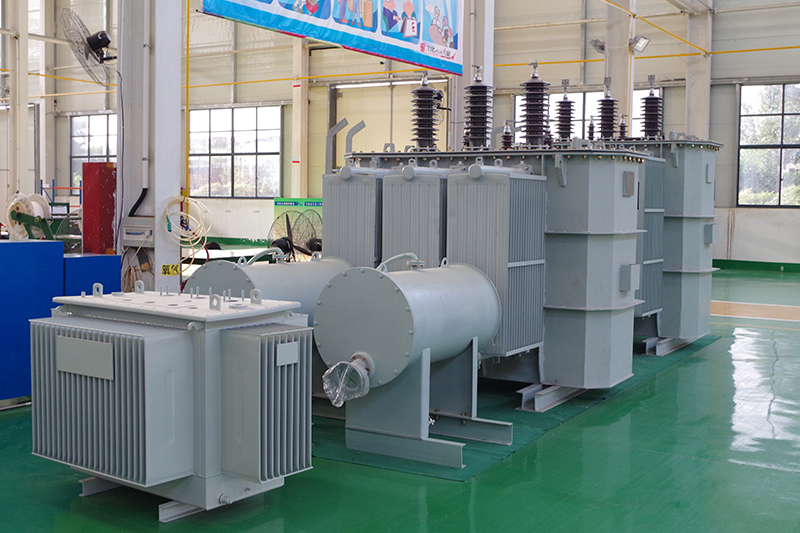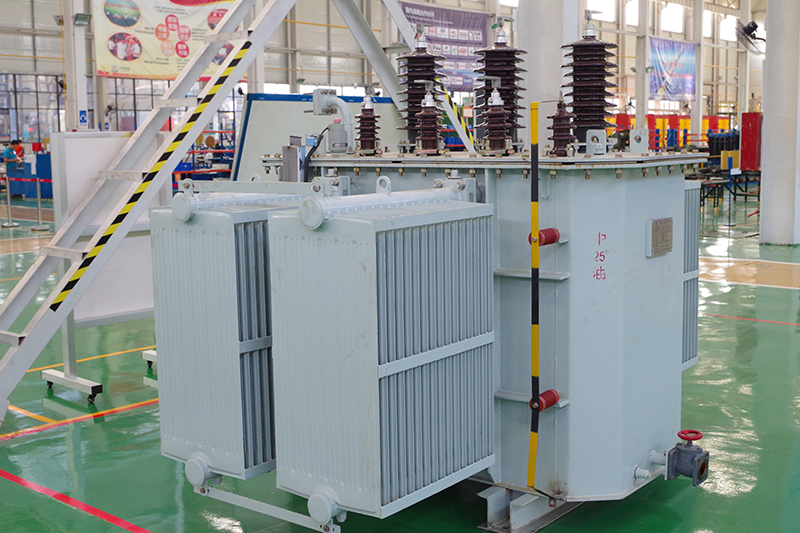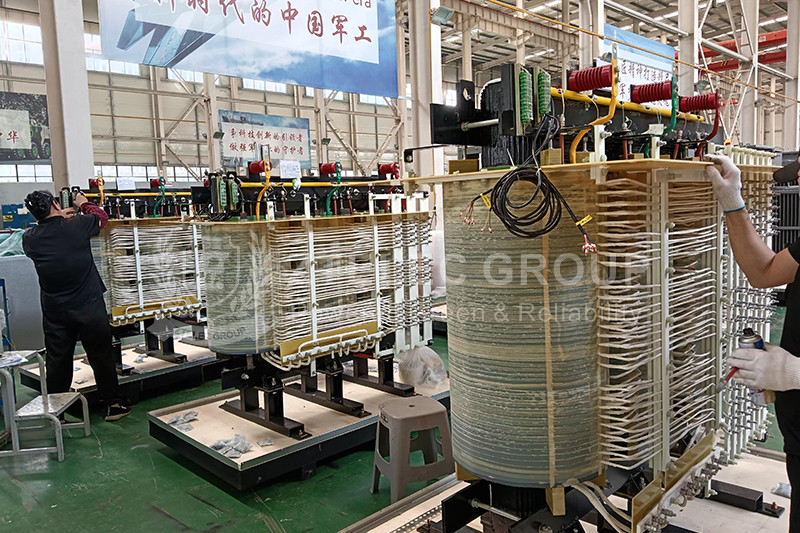Comprehensive Guide to Oil-Immersed Transformer Voltage Parameters and Selection
Oil-immersed transformers are essential components in modern power systems, enabling efficient energy conversion and transmission. The accurate selection and configuration of their voltage parameters play a critical role in ensuring grid reliability, safety, and cost-effectiveness. This article provides a complete analysis of key voltage-related parameters and practical selection strategies, offering a valuable reference for engineers and power system planners.

1. Rated Voltage of Oil-Immersed Transformers
1.1 Definition and Classification
The rated voltage of a transformer is the design reference voltage that determines its compatibility with power grid systems. It includes:
Primary rated voltage: The input voltage matching the primary winding, aligned with the nominal voltage of the grid.
Secondary rated voltage: The no-load output voltage of the secondary winding, adjusted to account for voltage drop under full load conditions.
Voltage ratings are expressed as line voltages and typically measured in kV (high-voltage side) or V (low-voltage side). These ratings follow international standards such as IEC 60076.
1.2 Selection Guidelines
When selecting rated voltage, consider the following:
Voltage compatibility: Ensure exact match with grid nominal voltages to avoid operational mismatch.
Deviation tolerance: Most transformers support a voltage fluctuation range of ±5% to ±10%, allowing flexibility for grid variations without accelerating insulation aging.
2. Tap Changer Voltage Adjustment
2.1 Tap Range and Adjustment Principles
To accommodate voltage fluctuations due to load variation or seasonal changes, tap changers adjust the winding turns ratio. Typical ranges include:
±2×2.5% (total ±5%)—suitable for standard grids.
Special applications may require wider tap ranges depending on fluctuation severity.
2.2 Tap Changer Types and Selection
Off-load tap changers (NLTC): Require de-energization during adjustment. Cost-effective and suitable for stable grids.
On-load tap changers (OLTC): Allow voltage adjustment without shutdown. Recommended for dynamic systems such as renewable energy, arc furnaces, or smart grids.
Step size: Choose 1.25% for precision applications (e.g., electronics) or 2.5% for general industrial/civil use.

3. Insulation Level and Environmental Considerations
3.1 Standard Insulation Testing
Transformer insulation levels are validated via high-voltage testing:
Power frequency withstand (1 min): e.g., 85 kV for 35 kV transformers.
Lightning impulse withstand (BIL): e.g., 200 kV peak for 35 kV class.
These tests conform to IEC 60076 and GB 1094.3 standards.
3.2 Selection Based on Environment
High-altitude areas (>1000m): Air insulation weakens; select higher insulation levels.
Coastal or industrial zones: Increase creepage distance or use anti-pollution bushings to counter contamination.
4. Short-Circuit Impedance (Uk%)
4.1 Definition and Performance Impact
Short-circuit impedance determines the transformer's ability to limit fault currents and affects voltage stability:
Higher Uk%: Better current limiting, but may cause higher voltage drop under load changes.
4.2 Application-Based Selection
Industrial plants (e.g., metallurgy, chemicals): Prefer high Uk% to minimize fault impact on protection equipment.
Long-distance transmission: Optimize Uk% to balance voltage drop and current limiting effectiveness.
5. Comprehensive Selection Strategies
5.1 Voltage Matching with Grid and Load
On the grid side, assess long-term voltage fluctuation data to define required tap range. For the load side:
Inductive loads (motors, welders): Reserve voltage margin for start-up current surge.
Capacitive loads (capacitor banks, SVG): Implement overvoltage protection to manage capacitive rise at low loads.
5.2 Optimize Voltage Regulation Performance
Load rate control: Avoid overloading transformers to reduce voltage drop and thermal stress.
Reactive power compensation: Use capacitor banks to improve power factor and stabilize voltage output.
5.3 Insulation and Thermal Design Considerations
Altitude correction: Adjust insulation levels for installations above 1000m.
High-temperature environments: Reinforce cooling systems to prevent oil temperature from exceeding safety limits.
The proper configuration of voltage parameters in oil-immersed transformers is a multidimensional engineering task. By aligning rated voltage, tap range, insulation grade, and short-circuit impedance with specific power grid conditions, load types, and environmental factors, engineers can ensure reliable and efficient transformer operation throughout its lifecycle. This lays the groundwork for a stable, resilient, and economical power distribution network.
- more+releated article
- 2025-10-21Application of K Factor Transformer
- 2025-10-21Detailed explanation about transformer model w
- 2025-10-2010kV Oil-Immersed Transformer Safety: Lightnin
- 2025-10-20What are The Advantages of Phenolic Cotton Clo
- 2025-10-17Are Three-Phase Isolation Dry-Type Transformer
- 2025-10-17G10 Epoxy Sheet: Choosing the Right Specificat
- 2025-10-1610kV Oil-Immersed Transformer Operation Inspec
- 2025-10-163240-B Epoxy Phenolic Glass Fiber Cloth Lamina
- 2025-10-15G10 Epoxy Sheet: The Preferred Insulation Mate
- 2025-10-15Analysis of Energy-Saving and Noise Control Te





